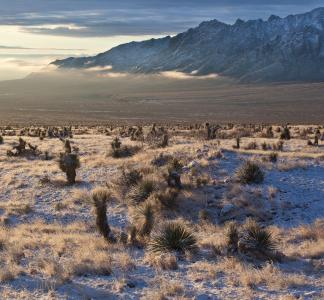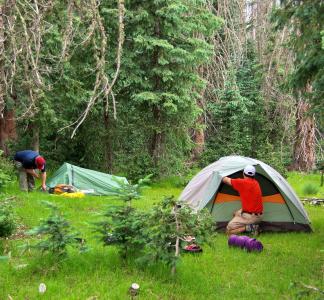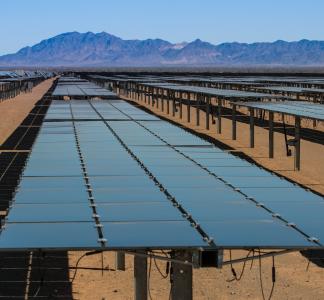5 ways LWCF can help confront the impacts of climate change
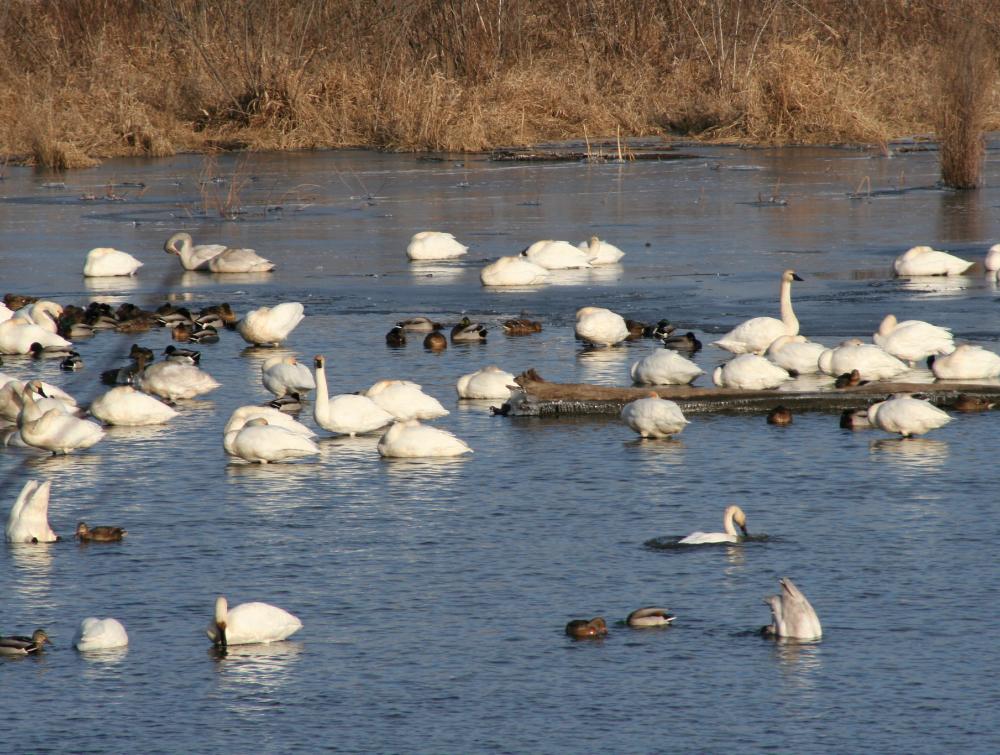
Swans in the Upper Mississippi River National Wildlife and Fish Refuge
Cindy Samples, USFWS
Program helps adapt to, mitigate damage
If you follow us on Twitter or Facebook or have glanced at our website more than once over the last couple of years, chances are you’ve read a little bit about the Land and Water Conservation Fund, or LWCF.
We know, we know. It gets old. But we keep mentioning it for a reason. LWCF is an extraordinary conservation success story, protecting iconic landscapes and local parks in all 50 states at no cost to taxpayers. Since the 1960s, it has been used to pay for everything from ensuring access to your favorite trail or climbing area; to protecting critical parts of our national parks from development; to investing in local soccer fields and swimming pools.
LWCF has a valuable role to play in mitigating and adapting to climate shifts—whether allowing animals to migrate along an unbroken corridor or helping manage deadly wildfires
As we learn more about climate change and the devastating effects it’s already having on ecosystems and communities, it becomes clearer that LWCF also has a valuable role to play in both mitigating and adapting to those shifts—whether allowing animals to migrate along an unbroken habitat corridor when their old home heats up or helping manage deadly wildfires. Now fully and permanently funded as of August 2020, LWCF can now capture that potential, fulfilling a 55-year-old promise to not only ensure access to public lands but tackle major environmental challenges.
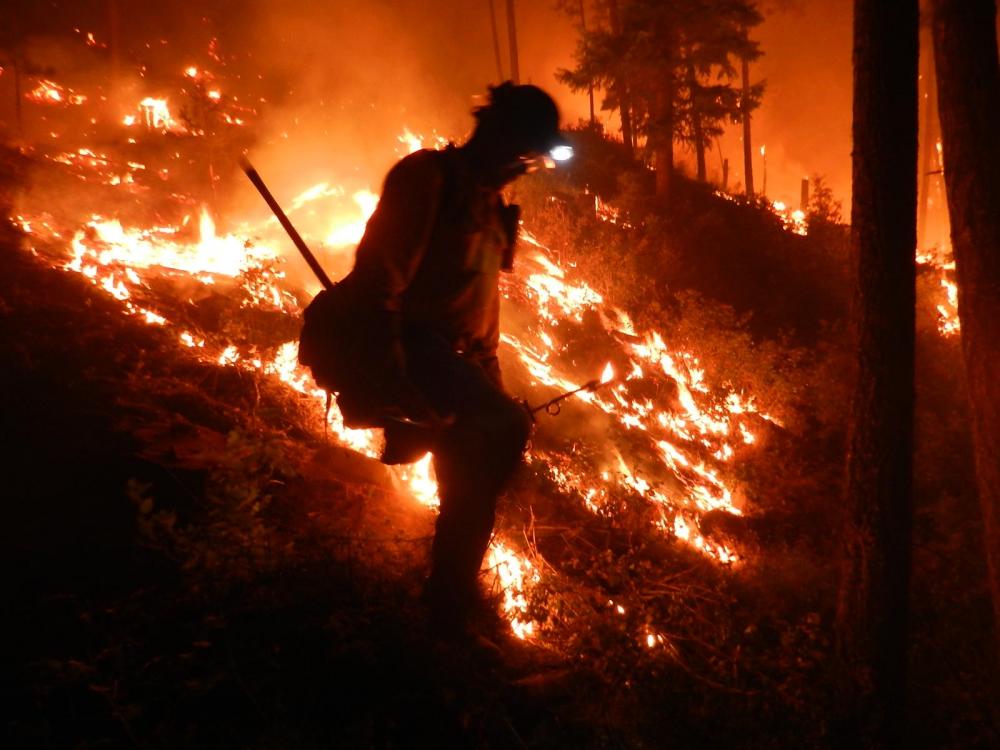
Fighting a fire in Lolo National Forest, Montana
USFS, Flickr
1) Managing dangerous wildfires
Wildfires have become among the most visible and immediate consequence of climate change, as hotter, dryer conditions drive bigger, more destructive fires and longer fire seasons. Compounding these factors is the spread of what’s called the “Wildland-Urban Interface”--the areas where human development mingles with wildlands, creating a category of cities and towns at a much higher risk of destructive fire.
LWCF can help manage fire in the Wildland-Urban Interface by protecting tracts within and adjacent to public lands and preventing development in the most fire-prone areas within them. It does this by buying inholdings—pieces of private land surrounded by public land--and adding them to existing tracts of federally supervised forest or grassland.
In the summer of 2013, a wildfire raced through part of Lolo National Forest and surrounding communities in Montana, wreaking havoc on towns in the Wildland-Urban Interface. Weeks later, LWCF was used to acquire private inholdings and absorb them into the national forest with an eye toward a better integrated fire management regime.
On the proactive side, LWCF has been used to consolidate federal territory in a region of northern California that is sometimes called the “Sierra Nevada Checkerboard” because it comprises a difficult-to-manage collection of small personal parcels interspersed with U.S. Forest Service land. In the Tahoe National Forest, where increasing development within or close to the Wildland-Urban Interface is an especially big concern, using LWCF is considered a key step to prevent catastrophic wildfires.
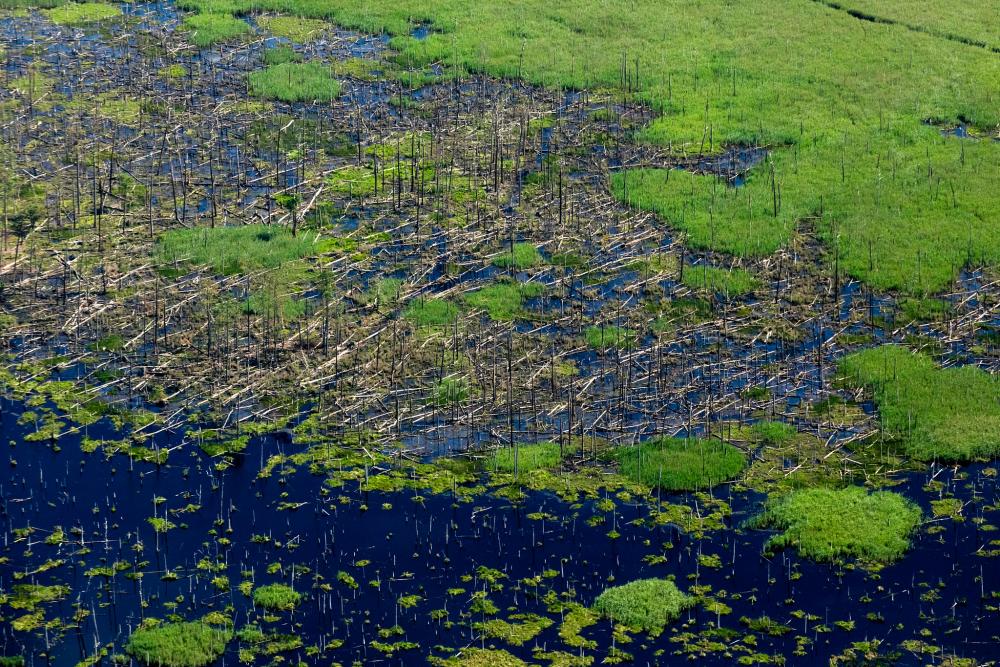
Forest affected by sea-level rise in Blackwater National Wildlife Refuge, Maryland, necessitating the protection of additional area for wetlands to expand
Will Parson, Chesapeake Bay Program
2) Shielding communities from floods and storms
Coastal wetlands and reefs are considered to be a vital bulwark against hurricanes and flooding, blunting the force of waves crashing against the shore and reducing the level of storm surge that pushes inland from the sea. A 2017 study valued the protection provided by wetlands during Hurricane Sandy at more than $625 million; though that storm resulted in a tragic loss of life and property, it’s estimated that some coastal communities would have experienced dramatically more damage were it not for nearby wetlands.
Development can destroy or weaken these natural lines of defense, and that’s where LWCF comes in. When the program is used to protect wetlands, it helps stabilize shoreline and mitigate the threat of super-charged storm surges and more frequent coastal flooding that is tied to climate change.
Tidal marshes in Maryland’s Blackwater National Wildlife Refuge are considered a poster child for the effects of sea-level rise on the Chesapeake Bay. As key wetland increasingly gives way to open water, the marshes themselves will need to “migrate” inland, finding space free of obstacles like roads and other development. LWCF has been used to protect land in the area that is well suited for that purpose. In addition to maintaining habitat for birds and wildlife, this helps maintain a buffer zone for shore communities.
LWCF has also invested heavily in the huge, decades-spanning project of restoring the Florida Everglades to its historical life-sustaining flow—a gradual progression of water through the Kissimmee River Valley south to Florida Bay that was disrupted by development from the 19th century on. Climate change consequences like sea-level rise are complicating that work—experts have called for retooling and expanding the plan, another reason for continued LWCF support—but the restoration projects should help mitigate some of the effects. For example, keeping a regular flow of fresh water in the famed “river of grass” should keep salinity low even when the weather gets very hot, conditions that would otherwise cause marshland to dry out and trigger a vicious cycle of plant and fish die-offs. In addition to making ecosystem more resilient and protecting key sources of water, Everglades restoration work should shore up a key buffer against hurricanes and storm surge for people in South Florida.
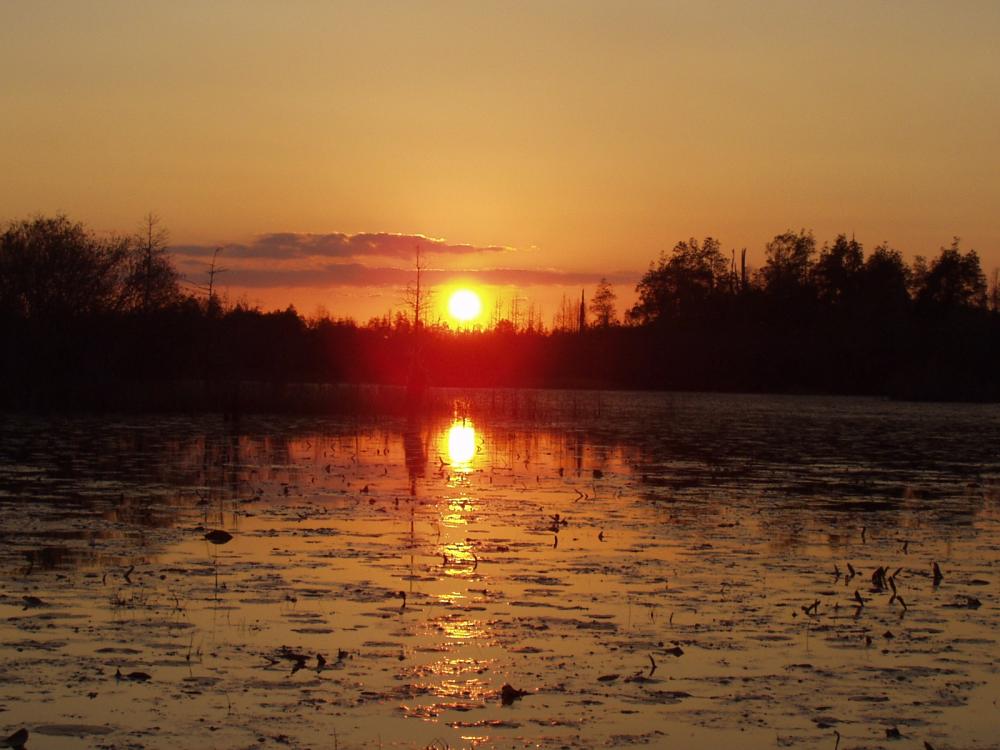
Okefenokee National Wildlife Refuge, Georgia
Joy Campbell, Okefenokee Adventures via USFWS
3) Safeguarding clean water
Climate change is expected to attack water supplies from all directions, both depleting aquifers and leading to toxic contamination of waterways. This makes it a huge priority to safeguard clean water wherever we can by protecting key watersheds from development.
LWCF has been used numerous times for just this purpose. It protected a chunk of longleaf pine habitat bridging the gap between Okefenokee National Wildlife Refuge (Georgia) and Osceola National Forest (Florida), safeguarding watersheds for the Suwannee and St. Mary’s rivers and thus the drinking water supply for millions of Floridians and Georgians. Through the Forest Legacy Program, it was used to protect forest land in northern New Mexico that includes waterways feeding into the Rio Grande, helping local communities continue their traditional irrigation and ranching practices. In Montana, it helped protect the Haskill Basin, which provides most of the municipal water supply for the nearby town of Whitefish.
Of course, protecting water sources doesn’t only benefit human communities. In California, the family of fish that includes salmon and trout has been characterized as “exceptionally vulnerable to climate change” by the Center for Watershed Sciences at the University of California, Davis. The center recommended reducing the human footprint on waterways like the Smith River, a “wild salmon stronghold” that flows into the Pacific Ocean a few miles from the Oregon border. LWCF was used to protect a key tributary to that river, preserving a source of cold, clean water for many species.
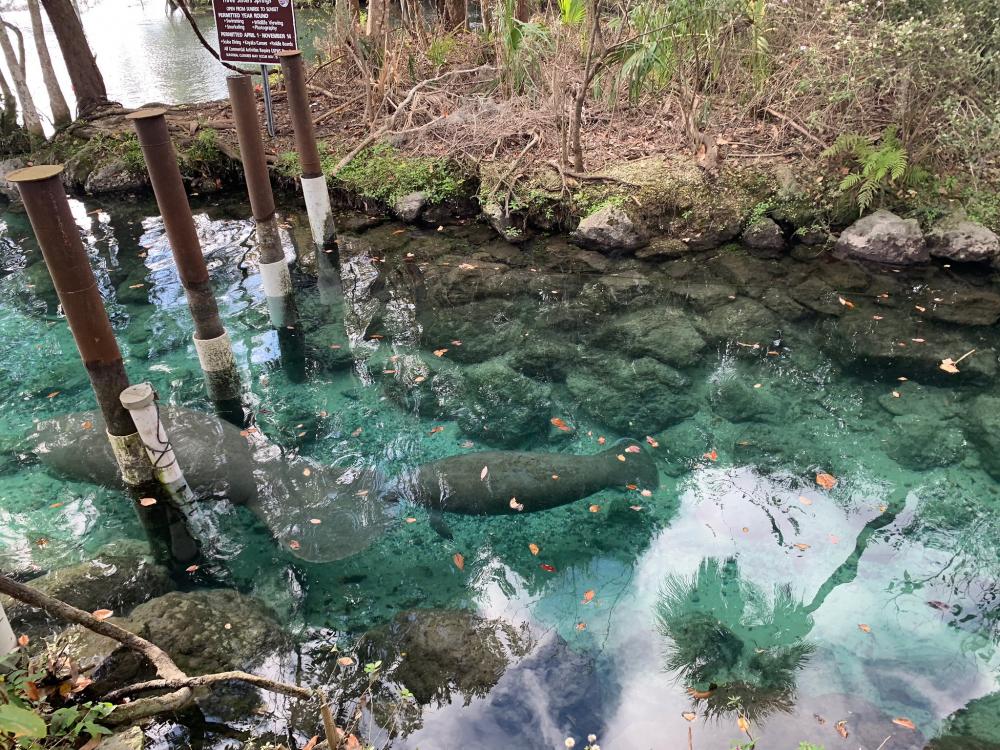
Manatees gathering near the Three Sisters Springs at Crystal River National Wildlife Refuge, Florida
Laika ac, Flickr
4) Allowing animal and plant species to adapt
Some of the clearest examples of how LWCF can support climate adaptation concern animal and plant species whose habitat or migration corridors are changing around them. By protecting pieces of interconnected land or key types of landscape that are in danger, we can give species a better chance of weathering temperature shifts and other changes.
Take birds. Climate change is making fewer ducks migrate south for the winter and experts have said that will mean more birds seeking refuge in states like Minnesota, Illinois and Iowa. LWCF has been used to secure and restore habitat in the Upper Mississippi River National Wildlife and Fish Refuge, a key protected area on the Mississippi Flyway that encompasses land and water in those states plus Wisconsin. Similarly, LWCF isbeing used to restore and expand protection for the Blanca Wetlands in Colorado to provide an interconnected system of wetlands to support populations of migrating birds like sandpipers and pelicans.
LWCF can be used to protect very small patches of crucial habitat, too. Experts say manatees may struggle to adapt to climate change (in particular, effects like sea-level rise and reduced freshwater flow may jeopardize certain springs they rely on in wintertime). In Florida’s Crystal River National Wildlife Refuge, a stretch of land and water abutting the Gulf of Mexico that is said to contain the highest concentration of manatees in the world, LWCF was used to helped acquire a piece of land buffering the Three Sisters Springs that had been slated for residential development. Now managed as part of the refuge, this area can be carefully monitored and protected from runoff, pollution and human harassment to help local manatees survive even as the wider environment becomes less hospitable.
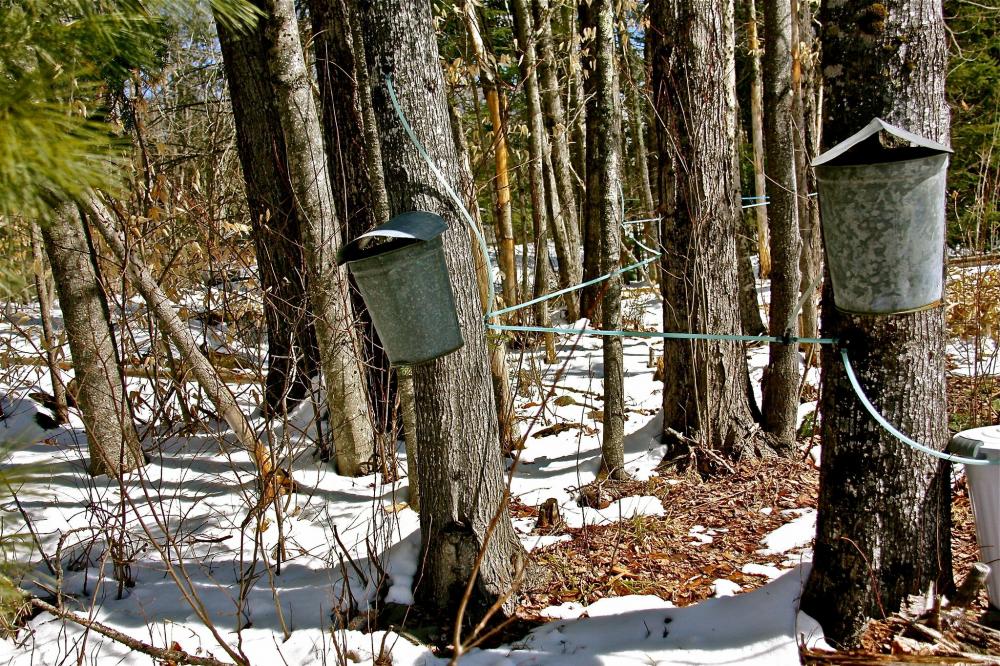
Maple syrup farm in Maine
Carol Blyberg, Flickr
5) Helping local economies stay afloat
In ways too varied and numerous to list, climate change is threatening the livelihoods of communities across the country—from the skiing town that relies on now-dwindling snowpack to the fishing community that sees Atlantic cod populations in peril. In some cases, LWCF may be able to help mitigate those impacts.
One excellent example can be found in New England. Drought and other stressors tied to climate change are affecting maple syrup production in the northeastern U.S., and some communities dependent on that market stand to suffer as a result. But as part of the Big Six Forest Legacy Program project, LWCF is being used to protect a stretch of forest immediately opposite the Quebec border, in Maine’s North Woods, that is expected to be able to withstand these shifts and continue supporting sugar maple trees.
Meanwhile, in Wisconsin, fishing is big business, generating billions of dollars for the economy every year. The tasty, hard-to-catch walleye is a star attraction, but climate change and other stressors seem to be hitting the fish hard. The Chippewa Flowage, in the north, is one of the bodies of water that has been identified as relatively stable even in the face of climate change, and therefore an important refuge for walleyes in the state. LWCF helped acquire a piece of land surrounding the flowage that allows protection of the habitat and continued access to the waters for sportsmen, thereby offering a lifeline to the region’s outdoor recreation economy.
